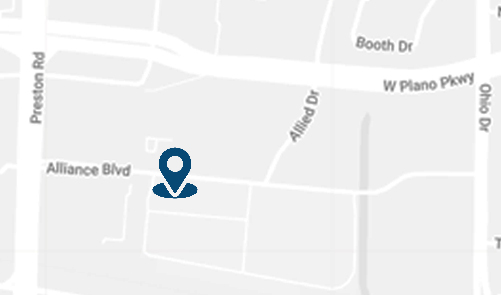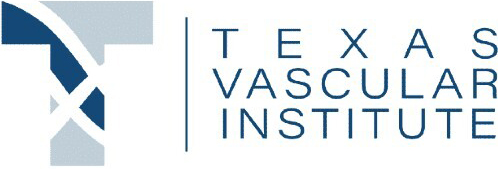By: Dr. Dev Batra | 01.29.23
Vein disease is a progressive condition that starts when a problem with a vein causes blood flow to become sluggish. That prevents your circulatory system from supplying your body with adequate oxygen and other nutrients. If not treated, it can cause significant health problems, including skin ulcers, abscesses, and bone infections.
At Texas Vascular Institute, with locations in Dallas and Hurst, Texas, interventional radiologist and vascular specialist Dr. Dev Batra understands the severity of vein disease in all its forms. That’s why he focuses on offering comprehensive treatment options and providing solutions that bring relief.
Venous stasis dermatitis is a late-stage of vein disease that’s not as well known as some others — like varicose veins — so Dr. Batra and our team have put together this guide to help you understand the five things that put you at risk for it.

Venous insufficiency (VI) and venous stasis dermatitis
Before you can understand venous stasis dermatitis, you have to understand the stages of vein disease that precede it. It all starts with a condition called venous insufficiency.
The veins are the part of your circulatory system that returns deoxygenated blood to the lungs to pick up more oxygen. Since blood flows against the pull of gravity, the veins contain one-way valves that snap shut after the blood passes through to ensure the blood moves forward.
Whether due to injury, or more likely to high blood pressure, the vein walls can weaken, which can also damage the valves. Unable to close fully, they allow the blood to flow backward, become sluggish, and pool in the vein. That is venous insufficiency.
If the superficial veins are involved, they engorge with blood and form colored and ropy protrusions on the legs — varicose veins. While many people consider them a cosmetic issue, they can cause swelling, itching, and burning and may even lead to clots in the deep leg veins, a condition known as deep vein thrombosis.
The clots further restrict blood flow in the limb and can be potentially life-threatening if all or part of the clot breaks off and becomes lodged in your lung.
Vein engorgement, whether in the superficial or deep veins, can lead to painful edema (leg swelling). And if you don’t treat the edema, it can lead to venous stasis dermatitis, which changes both the color and appearance of the skin.
Early symptoms include orange-brown spots, sometimes referred to as cayenne pepper spots. They develop when pressure from the edema causes capillaries to burst. When the hemoglobin within the capillaries breaks down, it releases a pigment that discolors the skin on your lower legs and ankles, turning it red or brown. You may also notice:
- Shiny or scaly skin
- Thickened skin
- Dryness and itchiness
A severe case of stasis dermatitis can cause permanent skin changes.
5 things that put you at risk for venous stasis dermatitis
Along with the earlier forms of vein disease, the five things that put you at risk include:
- Hypertension (high blood pressure)
- Congestive heart failure
- Weight challenges
- Many pregnancies
- Kidney failure (causes fluid buildup)
You’re also more at risk if you’re over 50, and women are more likely to develop it than men due to pregnancy, which increases pressure on the veins in the legs.

Treatments for venous stasis dermatitis
At Texas Vascular Institute, we offer several treatments to eliminate your diseased veins. These include:
VenaSeal™
This medical-grade injectable adhesive seals the diseased veins, which then die off. Blood is shuttled to nearby healthy veins.
ClosureFast™
ClosureFast is an endovenous radiofrequency (RF) ablation treatment. The RF energy forces the vein walls to collapse. Again, blood is rerouted to nearby healthy veins.
Ultrasound-guided foam sclerotherapy
For regular sclerotherapy, Dr. Batra injects a solution into the diseased vein, irritating the lining and causing the vein to scar and collapse. With ultrasound-guided sclerotherapy, Dr. Batra adds a gas to the sclerosing agent and then injects the foam-sclerosant blend into your vein.
The gas acts as a marker that can be seen with ultrasound, allowing him to target a specific part of the vein. And the foam allows for even distribution, producing optimal results. After the injection, the vein collapses.
If you have signs of vein disease, it’s essential to come to Texas Vascular Institute for an evaluation and treatment before you reach a stage that puts your health at risk. Give the office a call at either of our locations or book your appointment online today.
Read more blogs
Embolization Procedure
Discover embolization procedures for non-surgical relief from knee pain, heel pain, and fibroids. Safe, effective, and fast recovery.
Find Relief Without Surgery
Find relief without surgery at Texas Vascular Institute. Minimally invasive vascular treatments, faster recovery, and compassionate care.
Uterine Fibroid Embolization
Learn how Uterine Fibroid Embolization (UFE) treats fibroids safely without surgery. Discover benefits, recovery, and if it’s right for you.
WHAT OUR PATIENTS
have to say
Texas Vascular Institute always appreciates feedback from our valued patients. To date, we’re thrilled to have collected 378 reviews with an average rating of 5 out of 5 stars. Please read what others are saying about Texas Vascular Institute below, and as always, we would love to collect your feedback.
Leave a Review
Amazing Practice
I'm very particular with my Healthcare and tend to be cautious with referrals to specialists. This office is amazing from the first point of contact. Their staff are friendly, professional and highly knowledgeable. Then the Dr is just as amazing as his staff, absolutely brilliant. Office manager Jessica has this office running like a well oiled machine and does so with a smile, an air of confidence, kindness and professionalism. Love this practice!!
- Richard G.

Beyond Thankful
Dr Batra and his staff are amazing! We are so grateful to have found him. Everyone is so kind and so caring and Dr Batra explains everything so well and does procedures with excellence. Beyond thankful to be under their care!!!
- Bitsy P.

Gold Standard
This is a gold standard for how a medical practice should be run. I was promptly seen at my scheduled time, my ultrasound was thorough and I received plenty of attention and care from the staff and Dr.Batra.
- Weronika L.
INSURANCE
We accept most major insurance plans. Please contact the medical office for all insurance related questions.









8330 Meadow Rd #100
Dallas, TX 75231
For Appointments: 972-798-4710
General Inquiries: 972-646-8346

809 West Harwood Rd, Suite 101,
Hurst, TX 76054
For Appointments: 972-798-4710
General Inquiries: 972-646-8346

4716 Alliance Blvd Suite #180,
Plano, TX 75093
For Appointments: 972-798-4710
General Inquiries: 972-646-8346

